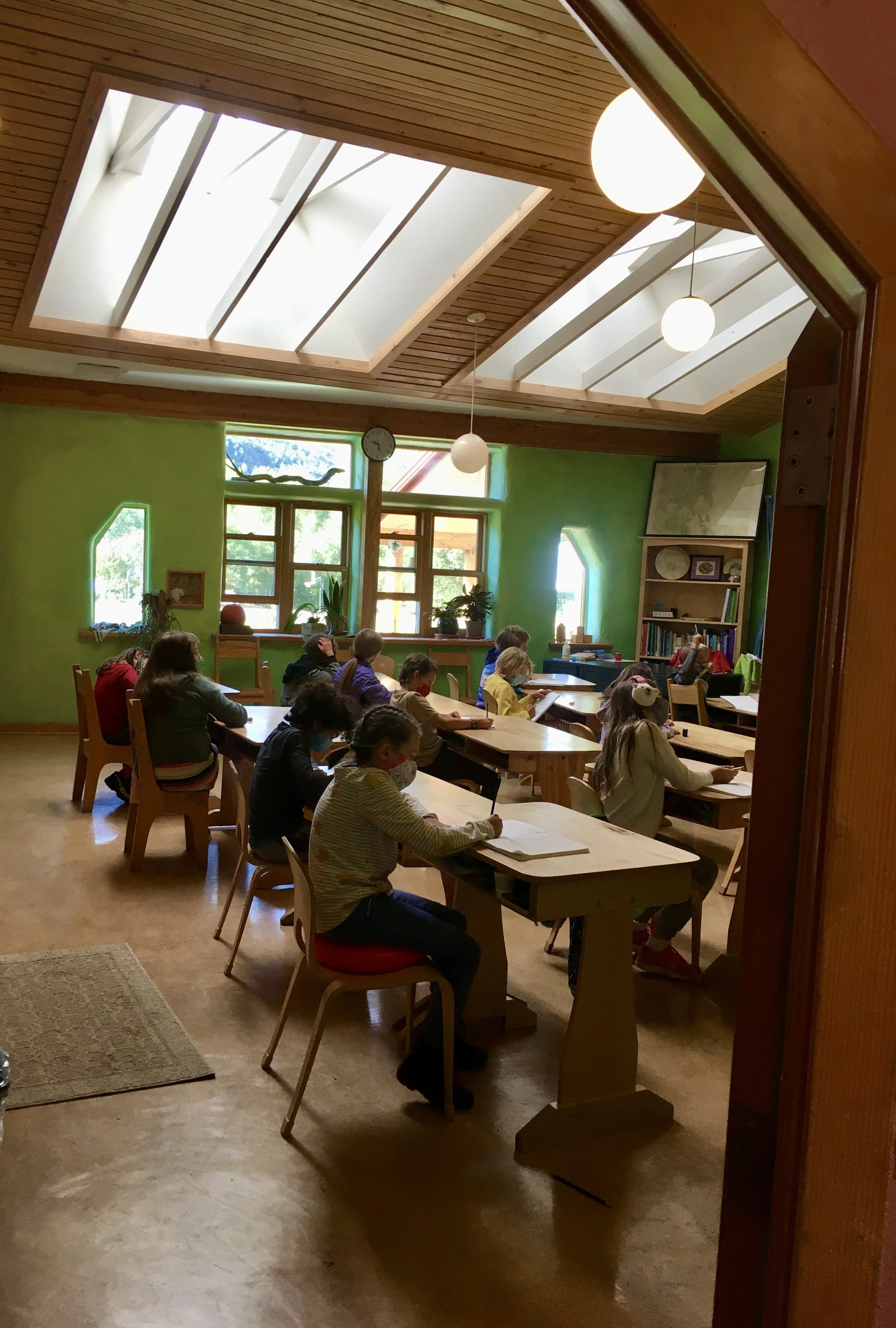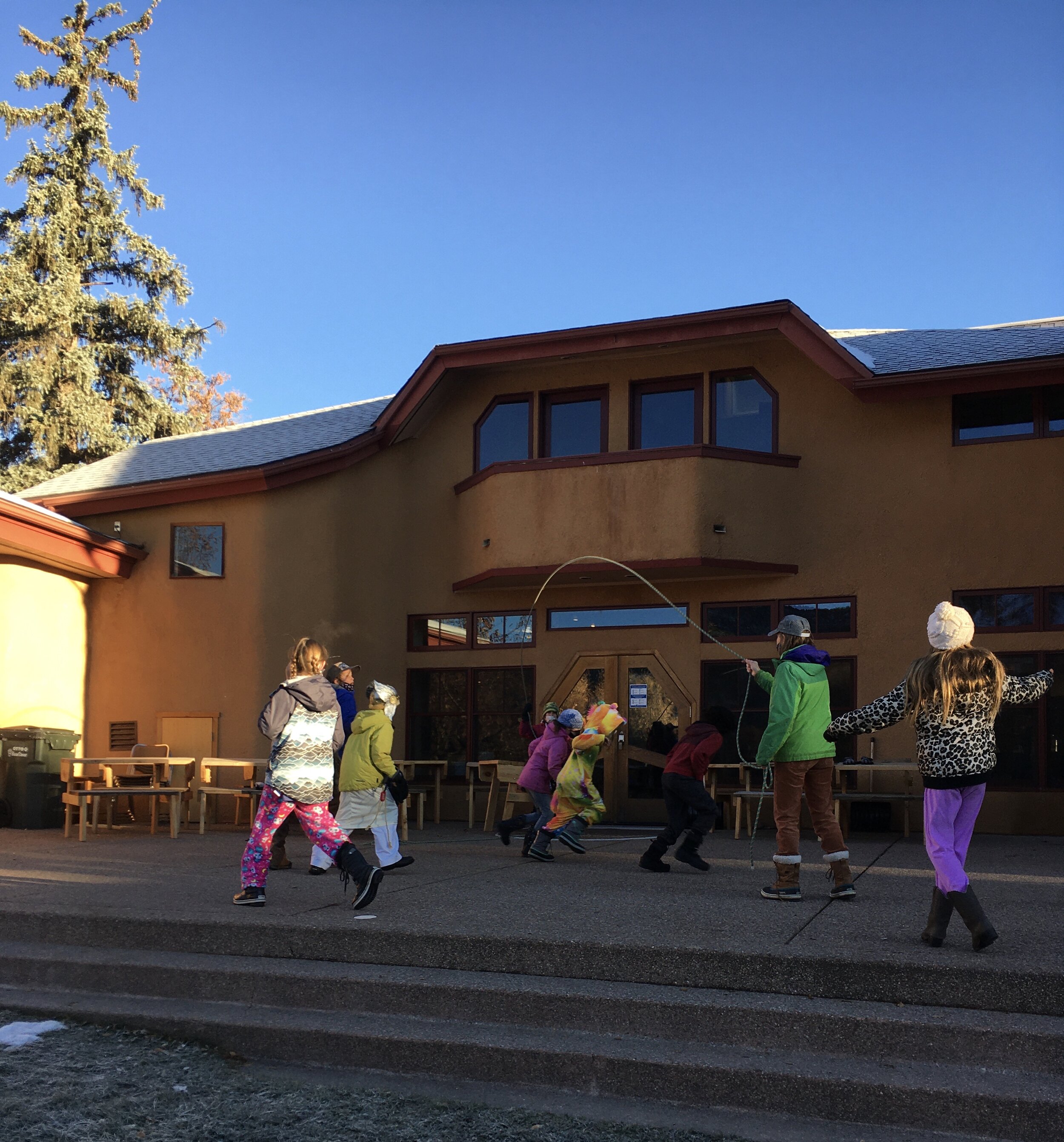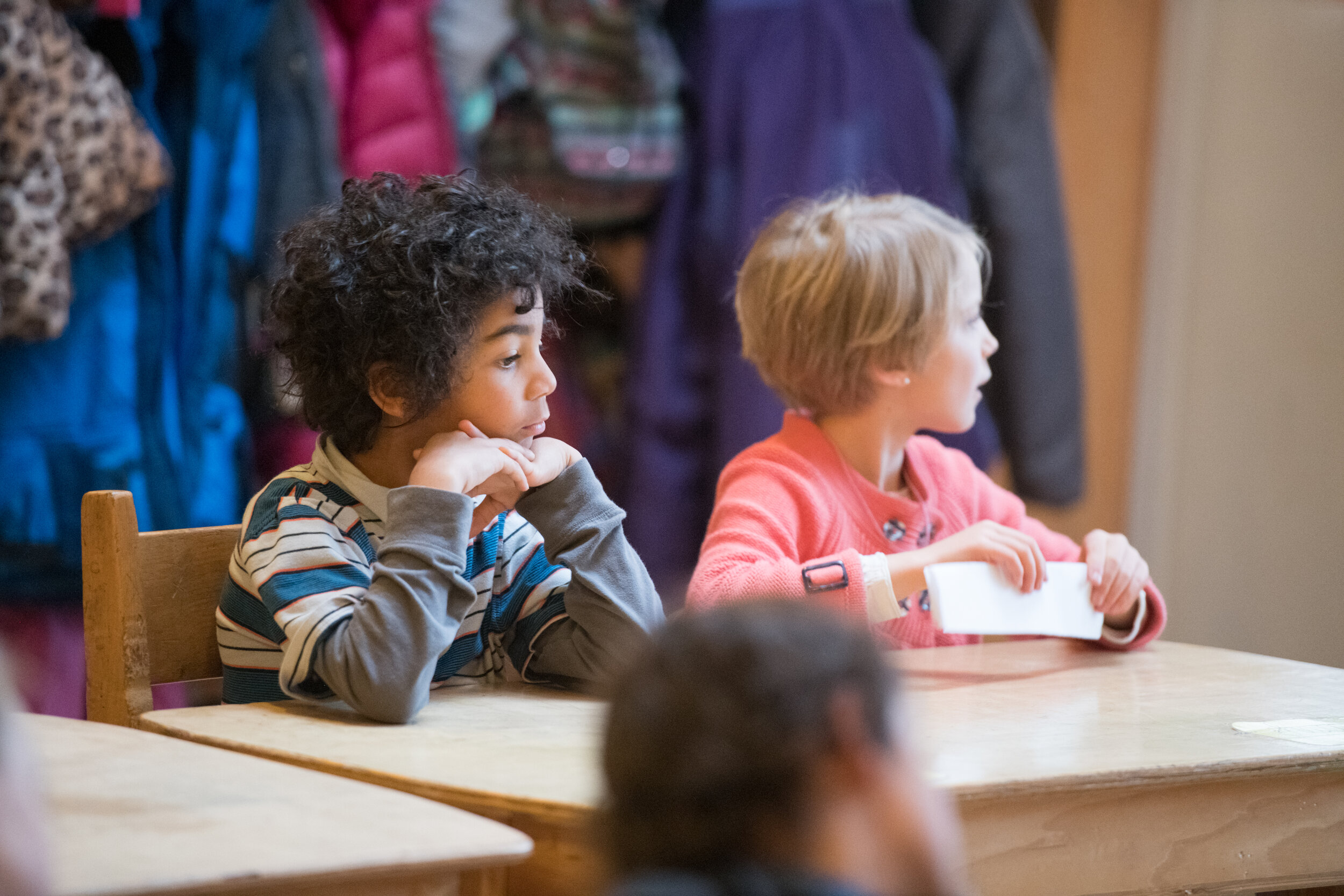Upon first glance, Waldorf Education looks much different, even curious, to the point that some might say we are “out of step with the times”. Look deeper however, and you’ll see an approach to education that’s more relevant and necessary than ever. It’s possible to flip the perspective and see Waldorf Education as the cutting edge in education today.
If we think about navigating the future, what tools are most relevant for individuals to carry in their backpack as they embark into a world that can be harsh, chaotic and wildly unpredictable?
Waldorf Education has spent the past 100 years nurturing in students, human capacities that go beyond book smarts. Curiosity, compassion, resilience and courage are just a few of the qualities our graduates carry with them that changes how they move and interact with the world around them. This is an approach to education that not only prepares students academically at the highest level, but challenges individuals to grow into themselves in a way that allows them to adapt and impact the world around them while carrying a deep sense of self.
Explore some the ‘differences’ with Waldorf Education below and discover the why behind some of the common questions around Waldorf Education.
Why a slow tech approach?
Technology is valuable and holds an important place in our world. The rush however, to place a tablet or computer in the hands of young children has been shown by substantial research to bring a slew of negative consequences. Our goal is to nurture students with capacities for critical thinking, problem solving and creativity that empowers our Middle School students to begin engaging with technology as a tool for innovation. WSRF graduates have gone on to hold roles in leading technology companies including Apple Inc. and have expressed the value of learning to engage with the world around us before easily making the transition to working with technology as a tool in our modern world. We believe in ‘slow tech’, not no tech.
Why do our students move & play?
We see freeplay is the backbone of creativity. The opportunity for students to run, jump and skip their way through a world of imagination cultivates creativity that translates into critical thinking and dynamic problem solving. Creative play supports invaluable social skills, and develops the parts of the brain responsible for executive functioning, creative problem solving and self-control. More broadly speaking, movement supports students in synthesizing their learning and engaging more deeply with academic work. Movement is therefore entangled with multiple learning elements including math, language and rhythm as a way for students to more deeply engage by learning through their whole bodies.
Why do our teachers stay with their class multiple years?
By staying with a class from 1st grade to 8th (ideally), our teachers don’t have to spend time each year getting to know the students or where they stand in their learning. Instead, teachers build a deep, often lifelong connection with students and a genuine understanding of their individual needs, learning styles, strengths and opportunities for growth. The result is richer, more personalized learning and the unique experience of navigating a longstanding relationship that starts on the first day of 1st grade and extends for the years of learning ahead. Read more about the student-teacher relationship on our blog here.
Why and how do we use storytelling in our curriculum?
Oral traditions have been used throughout the majority of human history as a way to spark imagination, curiosity and wonder in the world around us and within one’s self. You’ll find stories woven daily into the curriculum from Kindergarten through eighth grade as one way students engage with new ideas and perspectives while laying a foundation for knowledge that reaches the level of knowing, not just remembering. Stories allow for a wide breadth of human experiences and perspectives to enter our classrooms and engage students with diverse points of view that extend far beyond our classroom walls. With the goal of nurturing global citizens, our curriculum intentionally enlivens an awareness in our students of the many points of view, values and voices that make up the human experience.
Hear from our alumni
Wondering what our alumni say about WSRF? Please explore our alumni page for more information and a window into alumni thoughts.
Why do students make their own textbooks?
Our goal is for students to internalize knowledge rather than memorize facts to check boxes on exams. By writing and illustrating their own textbooks (known as Main Lesson books) every year from first to eighth, students live into the material at a level that nurtures true understanding and engagement. The result is a tangible book each year of beautiful, prideful work, and a vivid grasp on the subject matter that extends beyond the surface level into genuine understanding. Explore Main Lesson Books more here!
Why so much nature?
We believe a connection to the world around us and the early development of healthy habits is critical to our student’s success. Our thinking is reinforced by countless studies, including research from Yale University worth digging into that states with great impact: “The studies “point in one direction: Nature is not only nice to have, but it’s a have-to-have for physical health and cognitive function.”
Why do we take our time with reading?
Sadly, reading ability has become a measure of how ‘advanced’ a child is in their development. Our goal however, is for students to love to read rather than resent it for the pressure it puts on them or feel as if they have “fallen behind” in any way. Reading is far too important to be rushed and in our experience, slow and steady wins the race to nurturing enthusiastic, lifelong readers. Our students begin the reading process in 1st grade and continue a steady build of their skills. Ironically, like the Tortoise and The Hare, our graduates are often reading well ahead of their age group when entering high school.
Why do we knit?
We see this work as ‘will work’. In creating spaces for the human will to be the driving force behind creations, this capacity for action and internally motivated creation is strengthened: a capacity critical for adults capable of building, creating, changing and impacting the world around them. Our students spend a significant amount of time working with their hands including knitting, painting, molding, woodworking and sculpting. When considering knitting, we see an opportunity to develop fine motor skills, hand eye coordination, strengthen counting skills and the chance to learn a lesson in perseverance. Students are challenged to draw on an inner sense of drive and motivation to bring their creations to fruition. Work they stand proudly behind.
Why is Waldorf Education Different?
Waldorf Education emphasizes rigorous academics, dynamic artistic endeavors and the nourishment and development of human capacities. We believe in the development of both skills and capacities. The whole human being is taken into consideration in every element from Parent Child to 8th Grade. The result is individuals who not only carry knowledge and skills but are self aware, internally developed and emotionally in-tune. Human capacities such as perseverance, creativity and empathy are as much a part of Waldorf Education as academics that explore diverse perspectives and complex subject matter. We believe in nurturing graduates capable of engaging in conversation and impacting the world around them.
Why a Tuition Model?
As an independent, non-profit school, our we rely on tuition and fundraising to cover operational cost. In order to deliver Waldorf Education to the fullest, an independent model is necessary which also means we are excluded from government funding.
Our Tuition however, is only our starting point. We offer an Individualized Tuition Adjustment Process (I-TAP) and are committed to working with each and every family. Before you determine if this education is affordable for your family, we urge you to start a conversation with us.
Ideas in the Media….
On Science:
“Every kid starts out as a natural-born scientist, and then we beat it out of them. A few trickle through the system with their wonder and enthusiasm for science intact.”
On Technology:
”Teaching is a human experience and technology is a distraction when we need literacy, numeracy and critical thinking.”
-Paul Thomas, Associate professor of education at Furman University in The New York Times (Read More)
On Math:
“Creativity is essential to particle physics, cosmology, and to mathematics, and to other fields of science, just as it is to its more widely acknowledged beneficiaries- the arts and humanities.”
-Lisa Randall, Theoretical Physicist at Harvard University (Read More)
On Freeplay:
“Free play is nature’s means of teaching children that they are not helpless.”
-Peter Grey, Professor of Psychology at Boston University in The Atlantic (Read More)
Why has Waldorf Education grown so rapidly around the world?
A Brief History of Waldorf Education
Developed by Rudolf Steiner in 1919, Waldorf Education is unique in its view of the needs of the growing child. Waldorf teachers offer a true “Renaissance education” by educating the whole child—the heart and the hands, as well as the head. The Waldorf curriculum is challenging, experiential, and comprehensive, structured to respond to the three developmental phases of childhood: from birth to approximately 6 or 7 years, from 7 to 14 years, and from 14 to 18 years.
Modern education tends to focus so intensely on acquiring information that it overlooks what a child needs in order to build a meaningful life. In addition to thoughtfully-presented academics, Waldorf teachers help children develop a positive emotional life (emotional health, aesthetics, and social skills), a healthy will (confidence and the ability to get things done), and a strong inner compass that discerns right from wrong. In addition to providing children with information, critical thinking, and skills that traditional schools provide, Waldorf education helps children to become well-rounded, imaginative and confident problem-solvers, with a deep sense of empathy and social responsibility.
Today there are more than 1100 Waldorf schools in 60 countries and Waldorf/Steiner schools represent the largest and fastest growing non-sectarian educational movement in the world. Both classical and progressive, Waldorf education helps children become the people who are most needed for the future. As Waldorf nears its centennial anniversary, the founding ideals and methods are just as relevant today as when Rudolf Steiner founded the first Waldorf School 100 years ago. Waldorf Education has a proven, 100-year track record of educating children for school and for life.



















